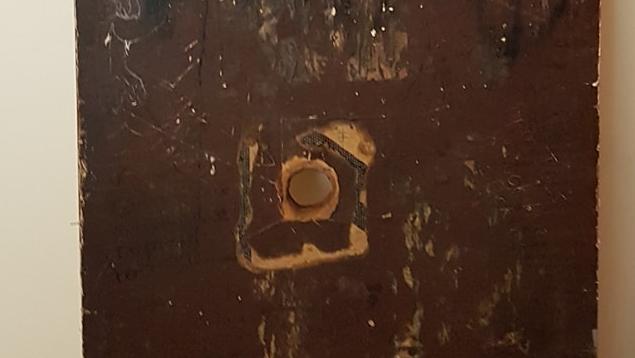Museum defends displaying glory hole saying it’s their responsibility to represent the entire community
The wooden toilet door with a glory hole is featured in the Western Australian Museum
By Steve Brown

Words: Steve Brown
A museum has defended a toilet door featuring a glory hole claiming it’s their responsibility to represent the entire community.
The wooden toilet door is from a train station toilet block south-east of Perth, which was a frequent gay beat at the time when homosexuality was illegal.
And the glory hole has been displayed in the Western Australian Museum to represent the gay culture.
Neil Buckley, who is part of the local activist group Sisters of Perpetual Indulgence, saved the door in 1997 before the toilet block was demolished.
He told The Perth Voice: “I am sure this exhibit will bring back a lot of fond memories for many of the men who used beat culture as a way to meet other gay men to form a friendship, partnership and a quickie.
“Beats were an important part of gay social life and culture: they were a great place to meet, make friends and have a great anonymous sexual experience.
“Beat culture is not often talked about, but most of the gay community has done it at one time or another.
“Sadly, this culture has now disappeared with the installation of automated toilet cubes and gay pick up apps like Grindr [and] Scruff.”
But despite opposition claiming the door was ‘too tacky’, the museum has defended featuring the glory hole as a museum are “safe places for unsafe ideas”.
The museum’s chief executive Alec Coles told PerthNow: “Clearly the LGBTQI community is a very important part of Perth’s society.
“We often talk about museums as safe places for unsafe ideas.
“Places you can explore topics that are maybe controversial, sometimes contentious, sometimes even confrontational, but the kind of places they can be explored in a responsible and measure way and hopefully without rancour.”
The state’s Shadow Culture and the Arts Minister Tony Krsticevic said: “While it is appropriate for the WA Museum to chronicle the rich and proud LGBTI community as a significant element in the state’s history, such an object is too tacky for display at what will be such a great new venue.
“I’m not sure it is a suitable exhibit to be seen by school-children who will flock to the new WA Museum when it is completed.”
